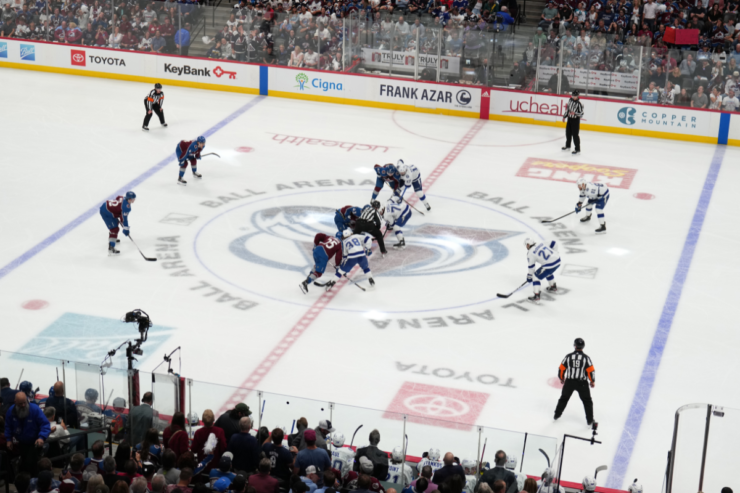Ice hockey is a sport that is unique in many ways, one of which is its division into three periods.
Unlike football, basketball, and soccer, which use a half or quarter system, ice hockey is played in three periods.
This structure is not arbitrary but is rooted in the history and practicality of the game.
This article will delve into the reasons behind this unique structure, its implications on the game, and why it is integral to the sport of ice hockey.
Contents
The Origin of Three Periods in Ice Hockey
Before 1910-11, professional ice hockey games were played in two halves, similar to football.
However, this changed when Lester and Frank Patrick, two pioneers of professional ice hockey, decided to alter the game’s structure.
They introduced the three-period system, which has been in place ever since. The only exception to this rule is when a game goes into overtime, effectively creating a fourth period.
The Patricks’ decision to switch from two halves to three periods was driven by two primary reasons. The first was the condition of the ice during the game, and the second was a more commercial consideration.
Maintaining the Ice Quality
The primary reason for the introduction of the three-period system was the condition of the ice. During a game, the ice quality deteriorates as players skate on it.
By halftime, the ice would become too rough, slowing down the game and making it more dangerous for the players. The puck would get lost when players stickhandled it, and players would often trip and fall due to the uneven ice surface.
Before the introduction of the three-period system, the Zamboni, a machine used to resurface the ice, would only come out once during halftime.
However, with the introduction of the three-period system, the Zamboni would come out twice, after the first and second periods.
This allowed for the ice to be refreshed more frequently, improving the flow and safety of the game and enhancing the players’ performance.
Commercial Considerations
The second reason for the introduction of the three-period system was commercial. The extra intermission provided an opportunity for increased sales at the concession stands.
Attendees would have an additional chance to purchase food and beverages, leading to increased revenue for the owners.
This commercial aspect, coupled with the improved game quality, made the three-period system an attractive proposition.
Why Not Two or Four Periods?
Most major sports have an even number of periods or halves. This provides an equal opportunity for teams to play on each end of the field or court. So, why does hockey not use a two or four-period format?
The primary reason is the condition of the ice. As mentioned earlier, the ice would become too rough by halftime, necessitating more frequent resurfacing.
The introduction of a second intermission allowed for the ice to be cleaned one more time before the game ended, improving the game’s flow and making it more exciting.
The additional intermission also provided players with another chance to rest between shifts, contributing to better performance and less fatigue.
As for why the NHL didn’t opt for a four-quarter system, it’s likely because three periods were sufficient.
The condition of the ice improved as much as it needed to with three periods, and an additional quarter was not necessary.
When Did the NHL Go to 3 Periods?
The National Hockey League (NHL) adopted the three-period system over a century ago, in the 1910-11 season. Before this, professional ice hockey games were played in two halves, much like football.
The change was initiated by Lester and Frank Patrick, two pioneers of professional ice hockey. They believed that the game needed a different structure to maintain the quality of the ice and the flow of the game.
The three-period system has been in place ever since, with the only exception being when a game goes into overtime, effectively creating a fourth period.
This change in structure was not just a random decision but was rooted in the practicality and commercial considerations of the game.
It has significantly contributed to the evolution of ice hockey into the fast-paced, exciting sport that it is today.
Why Doesn’t Hockey Have 2 or 4 Periods?
The primary reason why hockey doesn’t have 2 or 4 periods is the condition of the ice.
In a two-period format, the ice would become too rough by halftime, slowing down the game and making it more dangerous for the players.
The introduction of a second intermission allowed for the ice to be cleaned one more time before the game ended, improving the game’s flow and making it more exciting. As for why the NHL didn’t opt for a four-quarter system, it’s likely because three periods were sufficient.
The condition of the ice improved as much as it needed to with three periods, and an additional quarter was not necessary.
Moreover, the three-period system provides a unique strategic element, giving teams another opportunity to regroup and adjust their game plans, contributing to the overall excitement and unpredictability of the sport.
Conclusion
The three-period system in ice hockey is a unique feature of the sport. It was introduced for practical reasons, to maintain the quality of the ice and improve the flow and safety of the game.
The additional intermission also provided a commercial benefit, increasing sales at concession stands.
While it may seem unusual compared to other sports, the three-period system is integral to the game of ice hockey and has contributed to its evolution into the fast-paced, exciting sport that itis today.
The three-period system is not just a historical artifact but a practical solution that addresses the unique needs of the sport.
It ensures that the game remains fast, fluid, and exciting, while also providing a safer environment for the players.
The additional intermission also offers a strategic element, giving teams another opportunity to regroup and adjust their game plans.
The three-period system also reflects the adaptability and innovation that has characterized ice hockey since its inception.
From the early days of outdoor games on frozen ponds to the modern era of indoor arenas and professional leagues, the sport has continually evolved and adapted to meet new challenges and opportunities.
The three-period system is a testament to this spirit of innovation, demonstrating how a simple change in the game’s structure can have a profound impact on its play and enjoyment.
In the end, the three-period system is more than just a way to divide a game of ice hockey. It’s a crucial part of the sport’s identity, a defining feature that sets it apart from other sports.
It’s a reminder of the sport’s history and evolution, and a symbol of its ongoing commitment to providing the best possible experience for players and fans alike.
So, the next time you watch a game of ice hockey, take a moment to appreciate the three periods. They’re not just parts of the game, but a reflection of the sport’s unique character and spirit.
And who knows? Maybe they’ll inspire you to see other aspects of the sport – and perhaps even life itself – in a new light.
In conclusion, the three periods in ice hockey are a unique and integral part of the game.
They ensure the maintenance of ice quality, provide strategic opportunities for teams, and enhance the overall spectator experience.
The three periods are a testament to the sport’s adaptability and the continuous quest for improvement, making ice hockey the thrilling and engaging sport that it is today.
References
- NHL Rulebook 2018-2019. (n.d.). Retrieved from http://www.nhl.com/nhl/en/v3/ext/rules/2018-2019-NHL-rulebook.pdf







